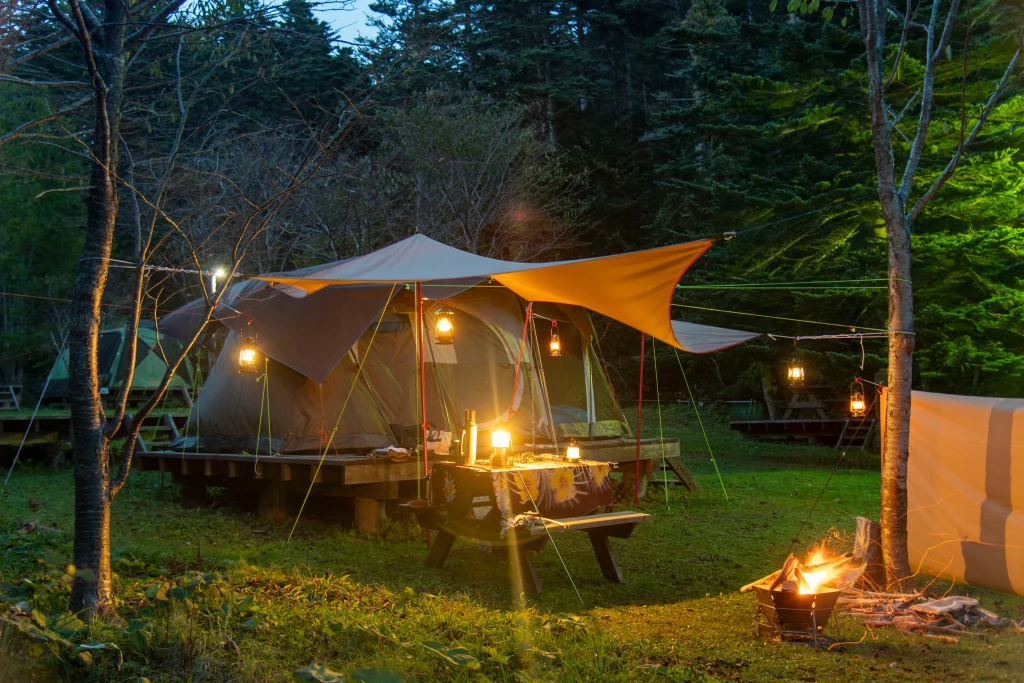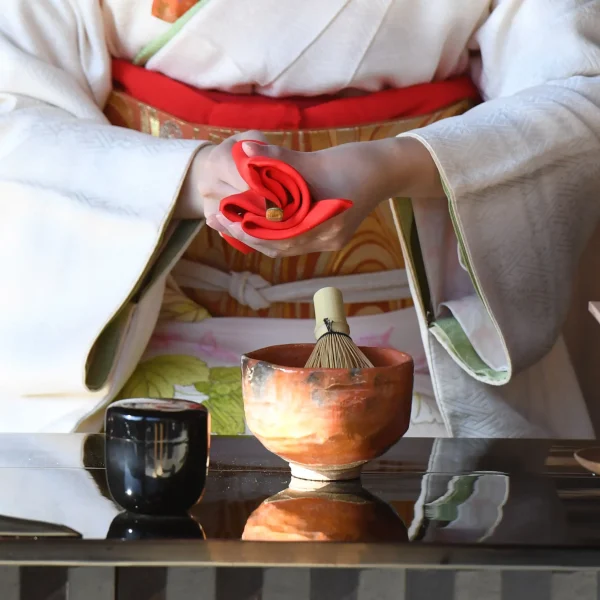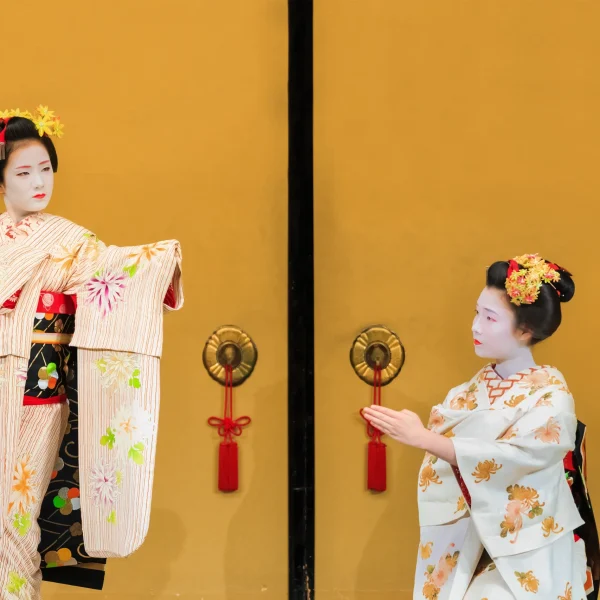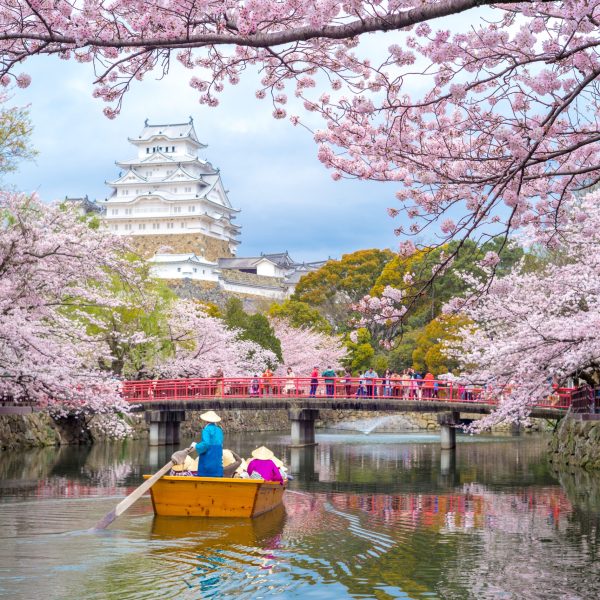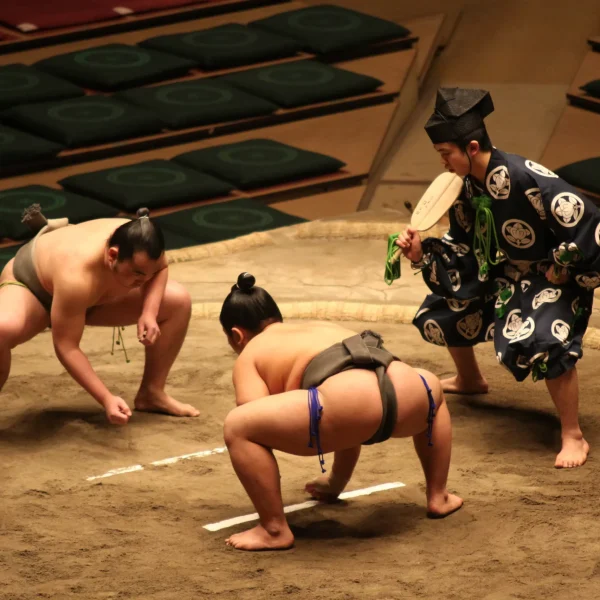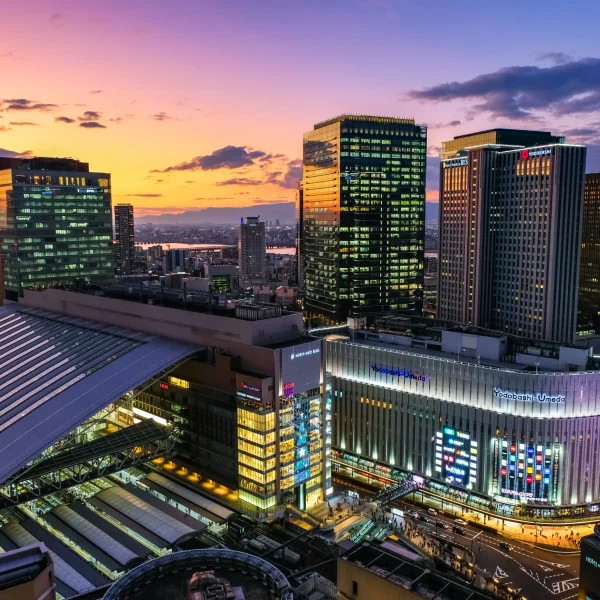Camping is gaining popularity as an activity that lets you refresh yourself in nature while escaping from everyday life. In Japan, a wide variety of camping styles can be enjoyed amid the country’s beautiful seasonal landscapes, allowing everyone—from beginners to experienced campers, families to solo adventurers—to find a style that suits them.
This article introduces the main types of camping available in Japan, the best seasons to go, essential gear, important tips, and a carefully selected list of recommended campsites from around the country. If you’re planning a trip to Japan and want to enjoy an outdoor experience, be sure to check this out.
What Kinds of Camping Can You Do in Japan?
In Japan, you can enjoy various styles of camping, ranging from casual day trips to full-on overnight stays and luxurious, comfort-focused options. Each style has its own appeal, so you can choose based on your goals and budget.
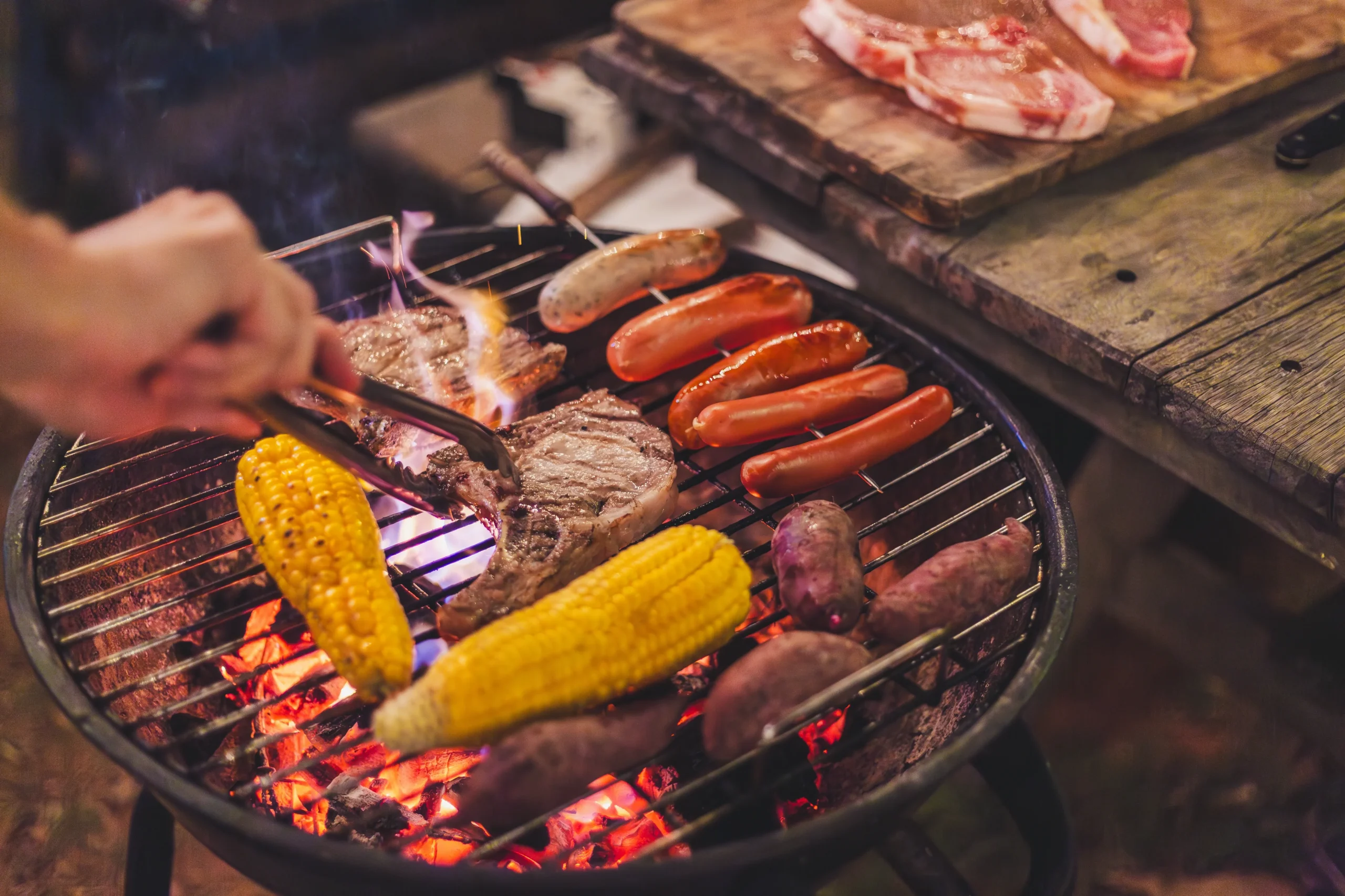
Let’s start with day camping, a style that can be enjoyed without staying overnight. It’s a daytime activity where you can enjoy barbecuing, river play, or hiking without an overnight stay, and you only need minimal gear. It’s easy for beginners to try, with costs ranging from around ¥500 to ¥5,000 per person.Barbecue equipment and food need to be prepared separately.
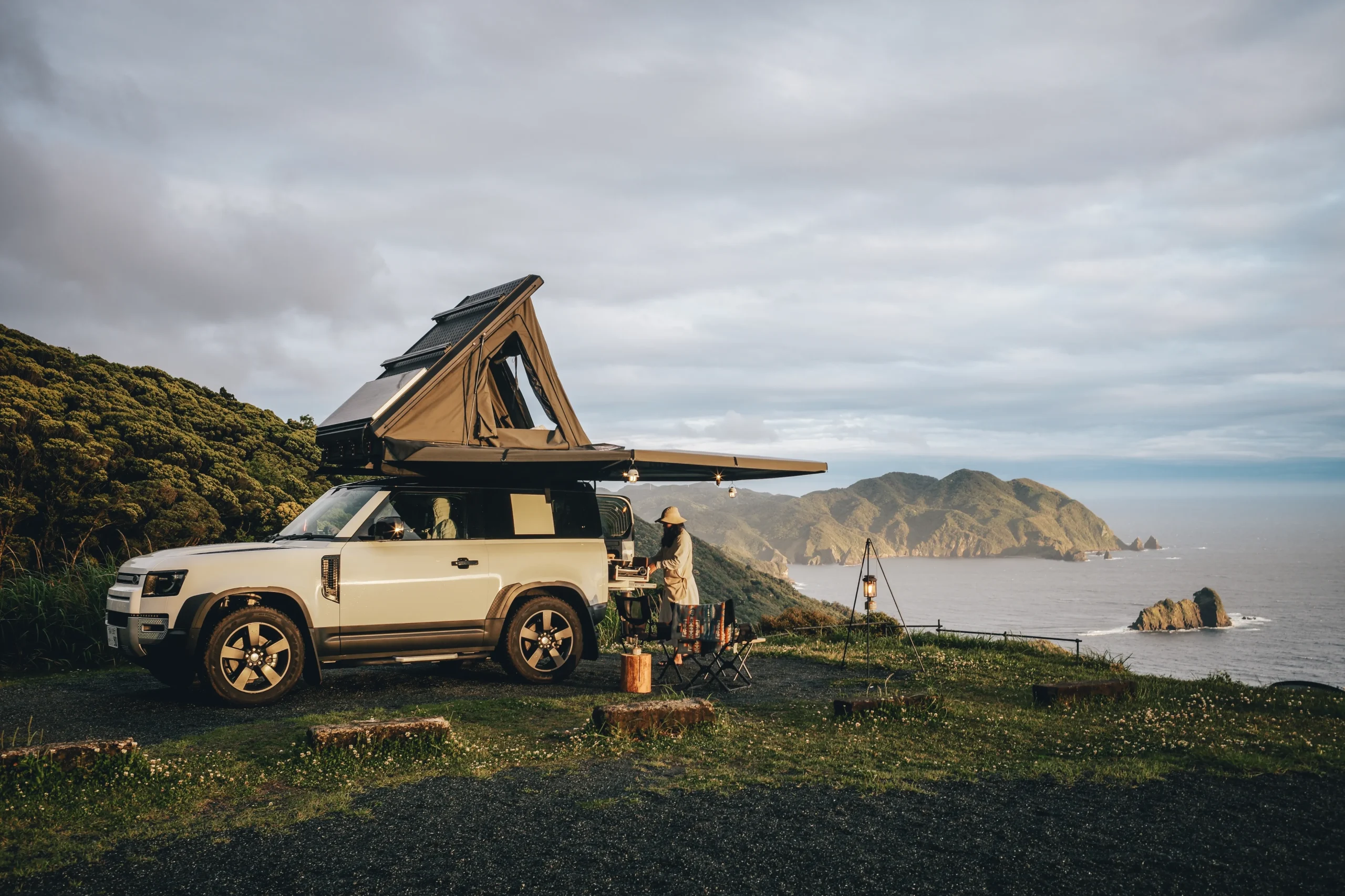
Next is auto camping, where you can enjoy a comfortable camping experience by car. You can pitch your tent right next to your car, making gear transport easy—this style is especially popular with beginners and families.Staying in a camper van also falls under this category.You don’t need to worry about packing light, and the typical cost is around ¥5,000 to ¥10,000 per night.
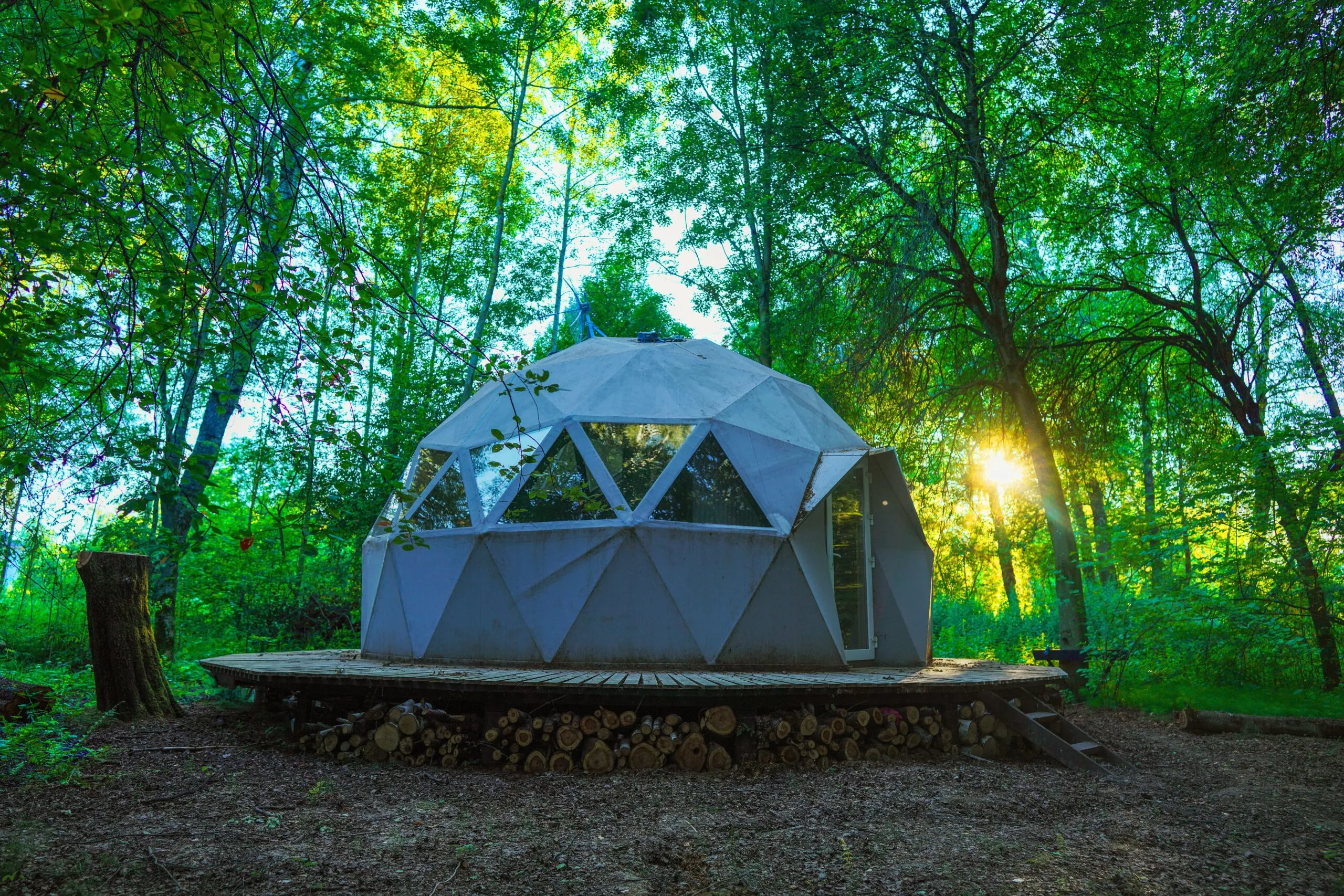
Lastly, there’s glamping (a portmanteau of “glamorous” and “camping,” referring to luxurious camping with amenities like beds and meals), which combines comfort with the feeling of being away from everyday life.Tents or cottages are fully equipped with things like air conditioning and beds, eliminating the hassle of setup so even first-timers can relax.Many plans include meals, making it great for those unfamiliar with the outdoors.Prices are higher, typically ¥15,000 to ¥50,000 per person per night, but it offers a unique and memorable experience.
Best Seasons for Camping in Japan
Spring and fall are the most comfortable times for camping in Japan.Temperatures are mild, humidity is low, and there are fewer insects, making these seasons easy even for beginners. In contrast, winter sees a big drop in temperatures, so proper cold-weather gear is essential.It can be a tough environment for those unfamiliar with winter camping.Summer brings high heat and humidity, along with lots of insects, so heatstroke and bug bites are key concerns.For these reasons, summer and winter may be better suited for experienced campers. Summer brings high heat and humidity, along with lots of insects, so heatstroke and bug bites are key concerns.For these reasons, summer and winter may be better suited for experienced campers.In Japan, large numbers of people go camping during Golden Week (late April to early May) and Obon (mid-August).These periods tend to be crowded, so if you’re seeking a quiet time in nature, it’s better to avoid holidays and choose an off-peak schedule.
What to Bring for Camping
The items you’ll need vary depending on your camping style and length of stay, but here’s a basic checklist:
- Tent
- Sleeping bag
- Sleeping mat
- Table and chairs
- Charcoal/firewood/fire pit
- Cooking gear (burner, pan, stove, etc.)
- Tableware
- Lantern or flashlight
- Food and beverages
- Toiletries
- Cold-weather gear (if needed)
Many glamping facilities come fully equipped, and some offer “hands-free” plans where you don’t need to bring any gear at all. With setup and meal prep handled for you, even those unfamiliar with the outdoors can relax and enjoy the experience. When choosing a campsite, be sure to check in advance what amenities are provided and whether you’ll need to bring anything yourself. Doing a little prep ahead of time can help avoid any unexpected issues and ensure a smoother, more enjoyable camping experience.
Things to Keep in Mind When Camping in Japan
To ensure a safe and comfortable experience while camping in Japan, it’s important to be aware of some basic rules. First, always follow each campground’s specific rules for handling trash, charcoal, and campfires. Open fires may be prohibited, and proper waste sorting is often required. Being considerate of other campers is also essential. Avoid loud voices or playing music late at night—aim to keep the campsite peaceful. Keep shared facilities like kitchens and restrooms clean for the next person. When spending time in nature, environmental care is crucial. Take care not to damage or pollute the natural surroundings. Some campsites may also have unique rules or restrictions. For peace of mind, check the official website or on-site instructions before your visit or during check-in.
5 Must-Visit Campsites in Japan
Jonanjima Seaside Park | Tokyo
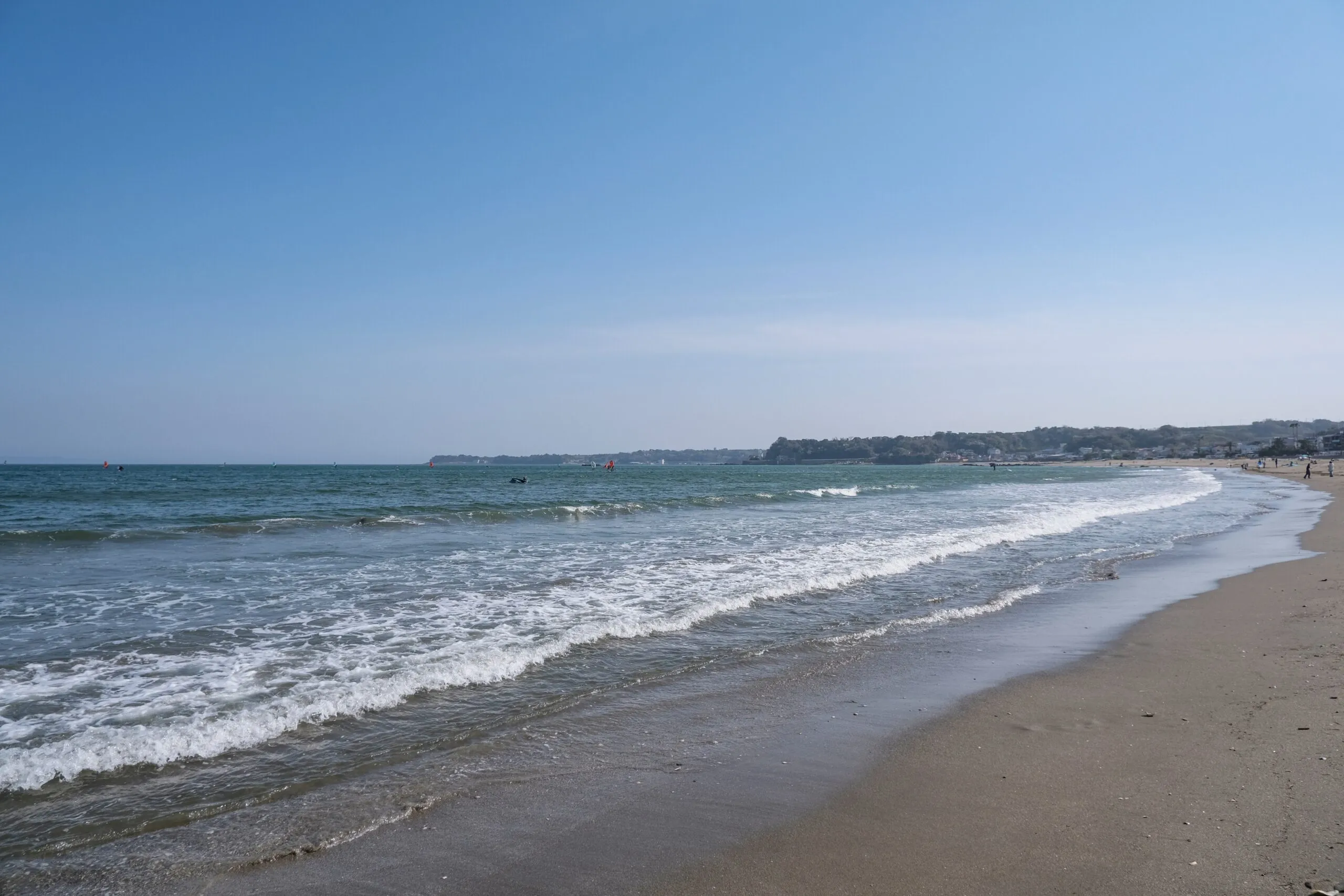
Jonanjima Seaside Park is one of the rare spots where you can enjoy camping right within Tokyo’s city limits. Just a 15-minute drive from Haneda Airport and 25 minutes from Tokyo Station, it’s incredibly easy to reach. It’s a popular choice for those looking for a quick nature escape without leaving the city. Overlooking Tokyo Bay, it offers scenic ocean views—an unexpected treat in such an urban setting.The sea breeze and coastal atmosphere provide a relaxing getaway from everyday life. You can enjoy both day camping and auto camping here, with the convenience of parking right next to your tent.BBQ gear rentals are available, making it easy for beginners to enjoy outdoor cooking without hassle.
Hikawa Campground | Tokyo

Hikawa Campground, located in Tokyo’s Nishitama District, is nestled in the lush nature of Okutama and is a favorite among city dwellers seeking tranquility. It’s just a 6-minute walk from JR Okutama Station, making it one of the most train-accessible camping destinations near Tokyo. With its dense greenery and crystal-clear streams, it’s the ideal place to disconnect from the hustle and bustle and reconnect with nature. The campground offers rentals for essentials like firewood and cookware, and even features well-furnished glamping options for a hassle-free stay. Suitable for everyone from first-timers to seasoned campers, it lets you enjoy the ever-changing beauty of Okutama through the seasons while experiencing authentic outdoor living in comfort.
Kōan Campground | Yamanashi
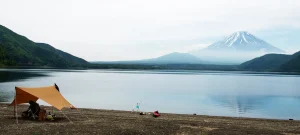
Kōan Campground is located on the shores of Lake Motosu in Minamikoma District, Yamanashi Prefecture, and is known for its breathtaking views of Mt. Fuji. On clear days, you can witness the striking beauty of Sakasa-Fuji, the mountain’s perfect reflection on the lake’s surface. A shuttle service is available from the nearby Motosuko Bus Stop, making it easily accessible by public transport. Guests can choose between traditional tent camping and more comfortable cabin stays. Full rental sets for tents and gear are available through partnered vendors, allowing even first-time campers to enjoy a worry-free experience. In addition to camping, the site offers activities like diving and canoeing—perfect for those who want to immerse themselves in nature through physical adventure. With stunning scenery and plenty of ways to enjoy the outdoors, this campsite offers a truly satisfying experience.
Snow Peak Tokachi Poroshiri Campfield | Hokkaido

Located in Obihiro City, Hokkaido, Snow Peak Tokachi Poroshiri Campfield is a premium campsite operated by the outdoor brand Snow Peak. Enveloped by expansive grounds and Hokkaido’s majestic natural surroundings, it offers a serene setting where you can completely unwind and leave your everyday worries behind. Hands-free camping plans are available for those without tents or gear, making it ideal for beginners. For an additional fee, you can also experience an outdoor sauna, allowing you to enjoy a truly relaxing time in nature. Even if you’re new to camping, friendly staff are available to give kind and detailed guidance, tent setup, and takedown—so you can join in with confidence. This is a one-of-a-kind camping experience unique to Hokkaido, where comfort meets the great outdoors.
Kirishima Kogen National Recreation Area | Kagoshima

Kirishima Kogen National Recreation Area is a multi-purpose campsite in Kirishima City, Kagoshima Prefecture, surrounded by the abundant natural beauty of Kyushu. The expansive site offers more than just camping—it’s also equipped with a pool, tennis courts, and other activities, making it a great choice for those who want to stay active. You can choose to pitch your tent freely in the open-site area or stay in a comfortable cottage. A natural onsen (hot spring) within the site adds to the appeal, giving you a soothing way to unwind after an active day. This campsite is perfect for families or groups looking to spend time freely in nature or for those who want to fully take in the charm of Kyushu at a relaxed pace.
Summary
Japan offers a wide range of camping styles—from quick and easy day trips to car-based auto camping and luxurious glamping experiences.If you’re unsure where to go, consider places that suit your needs—whether they’re close to the city or located in scenic areas with Mt. Fuji views, lakes, or hot springs.Many sites offer beginner-friendly services and gear rentals, so even first-timers can enjoy camping without owning any equipment.Take your time in nature and enjoy a journey where you can truly feel Japan’s four seasons and breathtaking landscapes.
